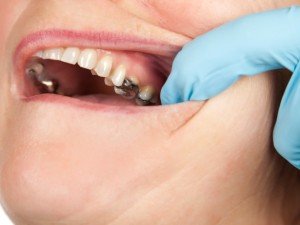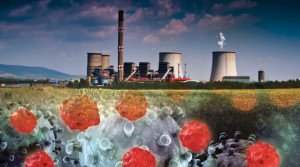Government response to ongoing Fukushima radiation? Deafening silence
3 min read
The silence of governments and the world press about the radiation dangers from Fukushima is alarming to say the least. We have an open nuclear sore on the planet, a radioactive boil that continues to burst casting a toxic shadow on the people of Japan and a few other billion people who happen to live in the northern hemisphere.
Video: Japanese communities record Chernobyl-level radiation
The municipality of Fukushima has created a plan to bring radiation exposure in all inhabited areas of the city to below a microsievert per hour within two years. Wishful thinking is allowed in Japan for it’s about the only thing that will stand up to the radiation that continues to pile up in the northern reaches of that country including Tokyo.
Concern is deepening that fallout from the Fukushima plant may have spread over a much wider area than previously thought. No matter how much the press and governments hide the dangers of radiation, fear is rising as the Geiger counters continue to click, demonstrating the levels of fallout that are striking on people’s skin and the crops in the fields.
As the crisis drags on, worries are growing, particularly among Fukushima Prefecture residents over futile nuclear decontamination operations. The unease is especially strong in areas in and around mountains that must be repeatedly decontaminated, as every rainfall brings a new batch of radioactive substance-contaminated leaves and soil washing down from the hills. Decontamination in this case is futile — actually worse than futile if you think of the eventual necessity to decontaminate the entire northern hemisphere.
Kyodo News reported that a citizens’ group detected levels as high as 5.82 microsieverts per hour in a park in the town of Funabashi, Chiba prefecture, 130 miles from Fukushima. That is five times higher than the highest levels recorded in the city since the March 11 disaster.
The week of October 12, 2011, officials in Yokohama, just south of Tokyo and 250 km from the Fukushima No. 1 nuclear power plant, said they had found abnormally high levels of strontium-90 in sediment on the roof of a block of flats. The radioactive isotope, which has a half-life of 29 years, can accumulate in the bones and cause bone cancer and leukemia. In September officials in Yokohama said they had detected 40,200 Becquerel’s of radioactive caesium per kilogram of sediment collected from a roadside ditch.
Scientists, environmentalists and citizens’ groups this past week (Oct. 22, 2011) have called for Japanese authorities to evacuate more areas in the wake of March’s nuclear accident after finding wider radiation contamination than officially reported. Researchers have found up to 6.15 million becquerels per square metre of soil in Fukushima city, 60 kilometres northwest of a nuclear power plant that has been leaking radioactive material into the environment since it was damaged in the earthquake and tsunami in the spring. The measurement is four times higher than the levels that made mandatory evacuation necessary in areas around Chernobyl, Ukraine after the 1986 nuclear accident there.
Japan’s Fukushima prefecture began health checkups of 360,000 children amid worries that radiation exposed them to the risk of thyroid abnormalities. The screenings began after a recent unofficial survey reported that 10 out of 130 children evacuated from Fukushima had hormonal and other irregularities in the thyroid glands. Radiation fears are now a daily fact of life, with reported cases of contaminated water, beef, vegetables, tea and seafood due to the Fukushima crisis.
Source: http://www.naturalnews.com/034053_Fukushima_radiation.html#ixzz1ckGEu6kl






